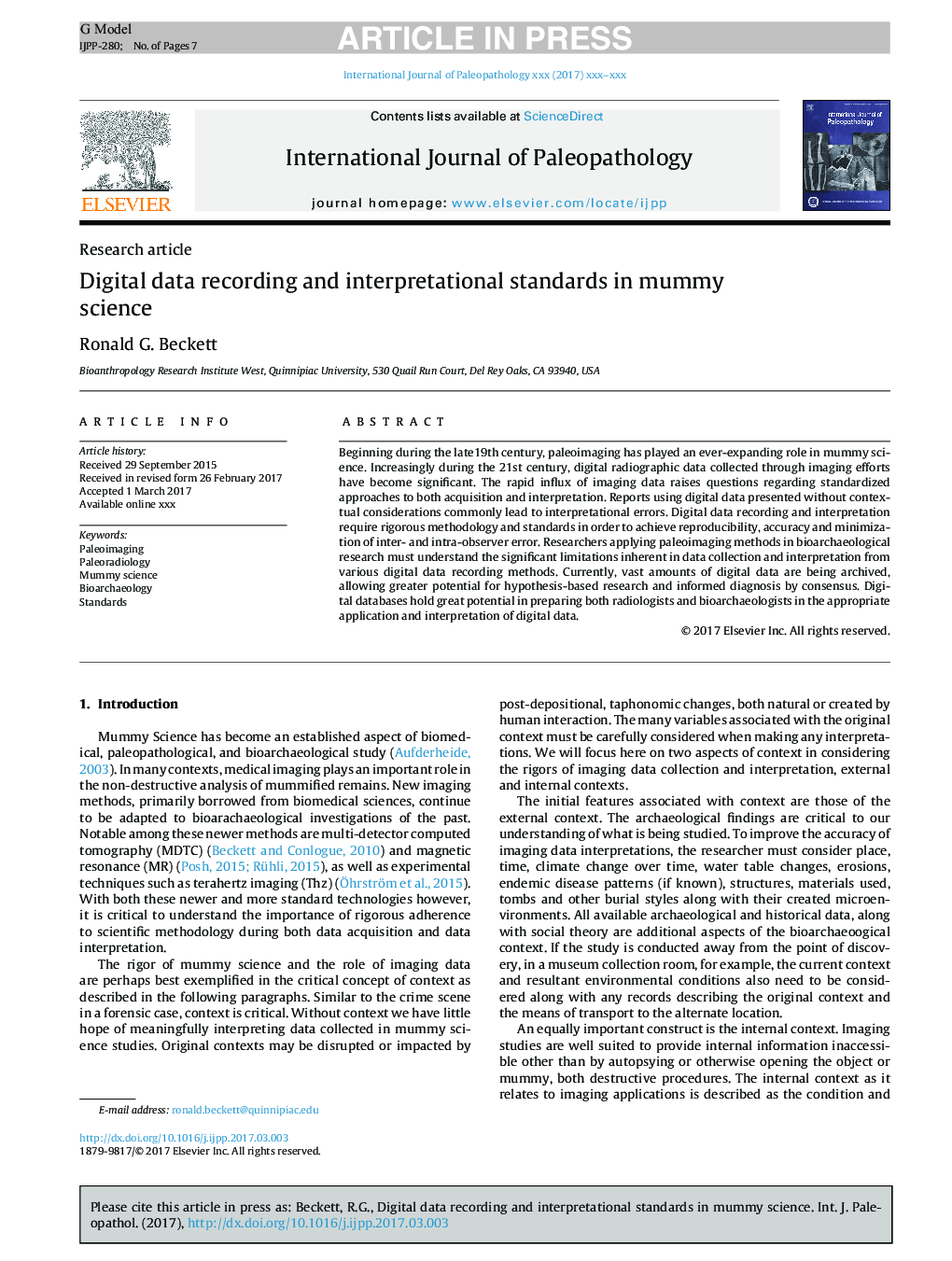| Article ID | Journal | Published Year | Pages | File Type |
|---|---|---|---|---|
| 6554811 | International Journal of Paleopathology | 2017 | 7 Pages |
Abstract
Beginning during the late19th century, paleoimaging has played an ever-expanding role in mummy science. Increasingly during the 21st century, digital radiographic data collected through imaging efforts have become significant. The rapid influx of imaging data raises questions regarding standardized approaches to both acquisition and interpretation. Reports using digital data presented without contextual considerations commonly lead to interpretational errors. Digital data recording and interpretation require rigorous methodology and standards in order to achieve reproducibility, accuracy and minimization of inter- and intra-observer error. Researchers applying paleoimaging methods in bioarchaeological research must understand the significant limitations inherent in data collection and interpretation from various digital data recording methods. Currently, vast amounts of digital data are being archived, allowing greater potential for hypothesis-based research and informed diagnosis by consensus. Digital databases hold great potential in preparing both radiologists and bioarchaeologists in the appropriate application and interpretation of digital data.
Related Topics
Life Sciences
Biochemistry, Genetics and Molecular Biology
Physiology
Authors
Ronald G. Beckett,
